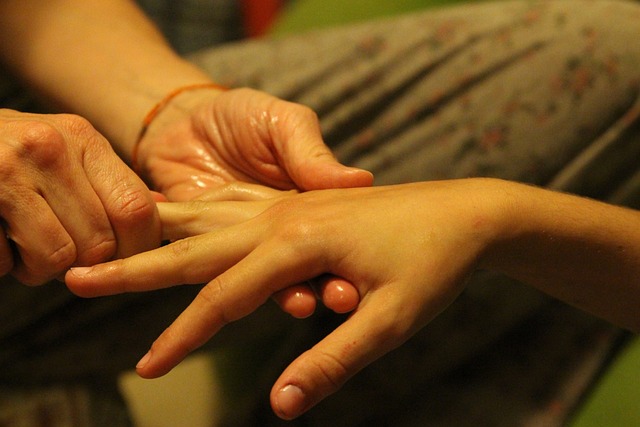Child welfare advocacy in Oregon is a multifaceted, collaborative effort dedicated to protecting and supporting vulnerable children and families. Through the Oregon Department of Human Services (DHS), the state coordinates holistic care including foster care, adoption services, and specialized programs for at-risk youth. Key focus areas are family preservation, reunification, and cultural competency, ensuring services are accessible and sensitive to diverse backgrounds. This holistic approach aims to create stable, nurturing environments promoting healthy development. Advocacy groups amplify voices of Oregon's most vulnerable, lobbying for better legislation, increased funding, and improved access to mental health, education, and healthcare. Challenges include balancing evidence-based policies with urgent needs, particularly from diverse backgrounds. Effective advocacy requires a nuanced understanding and strategic partnerships with local communities, schools, and healthcare providers, utilizing data-driven insights and evidence-based practices for targeted interventions. This collaborative approach leads to more effective, sustainable solutions for vulnerable children and families.
“Unveiling Oregon’s Child Welfare Landscape: A Journey Towards Justice
Oregon, with its commitment to safeguarding vulnerable children, has become a beacon of hope through robust child welfare advocacy. This article explores the intricate dynamics of the state’s system, highlighting the pivotal role played by advocates in protecting young lives. We delve into key challenges, offering insights on effective strategies for advocacy groups. From inspiring success stories to the power of collaboration, this comprehensive guide illuminates the path towards positive change in Oregon’s child welfare sphere.”
- Understanding Oregon's Child Welfare System: A Snapshot
- The Role of Advocacy in Protecting Vulnerable Children
- Key Challenges Facing Oregon's Child Welfare Agencies
- Effective Strategies for Child Welfare Advocacy Groups
- Success Stories: Advocacy Impact in Oregon
- Building a Network: Collaborating for Positive Change
Understanding Oregon's Child Welfare System: A Snapshot

Oregon’s child welfare system is a complex network designed to protect and support vulnerable children and families. At its core, the state’s approach emphasizes proactive measures and family-centered services. This involves early intervention programs that aim to prevent out-of-home placements by providing resources and support to struggling families. The Oregon Department of Human Services (DHS) plays a pivotal role, coordinating various agencies and community organizations to ensure a holistic care system.
Key aspects include foster care, adoption services, and specialized programs for at-risk youth. Child welfare advocacy in Oregon is characterized by a strong focus on family preservation and reunification whenever possible. The state also prioritizes cultural competency, ensuring services are accessible and sensitive to the diverse backgrounds of Oregon’s children and families. This holistic approach reflects a commitment to fostering stable, nurturing environments that promote the healthy development of all children within the state.
The Role of Advocacy in Protecting Vulnerable Children

Child welfare advocacy plays a pivotal role in protecting and supporting vulnerable children in Oregon. It acts as a powerful tool to ensure their safety, well-being, and access to essential services. Through dedicated advocacy, at-risk youth and their families gain access to resources that can break cycles of poverty, abuse, or neglect. By raising awareness, educating the public, and influencing policy decisions, child welfare advocates create a safer and more supportive environment for Oregon’s most vulnerable populations.
Advocacy groups in Oregon work tirelessly to amplify the voices of children and their families, ensuring their needs are met and their rights are protected. They lobby for better legislation, increased funding for critical services, and improved access to mental health resources, education, and healthcare. These efforts are crucial in fostering a positive impact on child welfare outcomes, ultimately helping to build stronger, healthier communities across the state.
Key Challenges Facing Oregon's Child Welfare Agencies

Oregon’s child welfare agencies face significant challenges in ensuring the safety and well-being of vulnerable children within their care. One of the primary hurdles is the complex web of policies and procedures that can sometimes hinder swift decision-making. The state’s commitment to evidence-based practices, while beneficial for long-term solutions, may lead to delays in critical cases where immediate action is required. Balancing these necessary protocols with urgent needs is a delicate act, requiring constant attention from advocates and administrators alike.
Additionally, the ever-changing demographics of Oregon present unique obstacles. With an increasing diverse population, including a higher number of foster youth from racial and ethnic minorities, agencies must adapt their approaches to meet the specific cultural and emotional needs of these children. Effective child welfare advocacy in Oregon demands a nuanced understanding of these challenges and the resources to address them, ensuring that every child receives the support they need to thrive.
Effective Strategies for Child Welfare Advocacy Groups

Effective strategies for child welfare advocacy groups in Oregon involve a multi-faceted approach to address complex challenges faced by vulnerable children and families. Firstly, building strong partnerships with local communities, schools, and healthcare providers can create a safety net that supports at-risk youth proactively. This includes fostering collaboration among diverse stakeholders to ensure comprehensive care and resources are readily available.
Secondly, utilizing data-driven insights and evidence-based practices is paramount for advocacy groups in Oregon. By collecting and analyzing data on child welfare outcomes, trends, and best practices, advocates can make informed decisions and develop targeted interventions. This strategic approach ensures that efforts are aligned with the unique needs of Oregon’s child welfare system, leading to more effective and sustainable solutions.
Success Stories: Advocacy Impact in Oregon

Building a Network: Collaborating for Positive Change

In Oregon, child welfare advocacy is a collective effort that thrives on collaboration. Building a robust network of stakeholders—including social workers, community organizations, policymakers, and parents—is key to driving positive change in the system. By fostering partnerships, these advocates create a supportive ecosystem where resources are shared, best practices are exchanged, and the voices of children and families are amplified.
Collaborative initiatives ensure that child welfare efforts are comprehensive and tailored to the unique needs of Oregon’s diverse communities. This network-driven approach not only enhances service delivery but also strengthens prevention strategies, ultimately aiming to keep families together and support vulnerable children within their communities.






